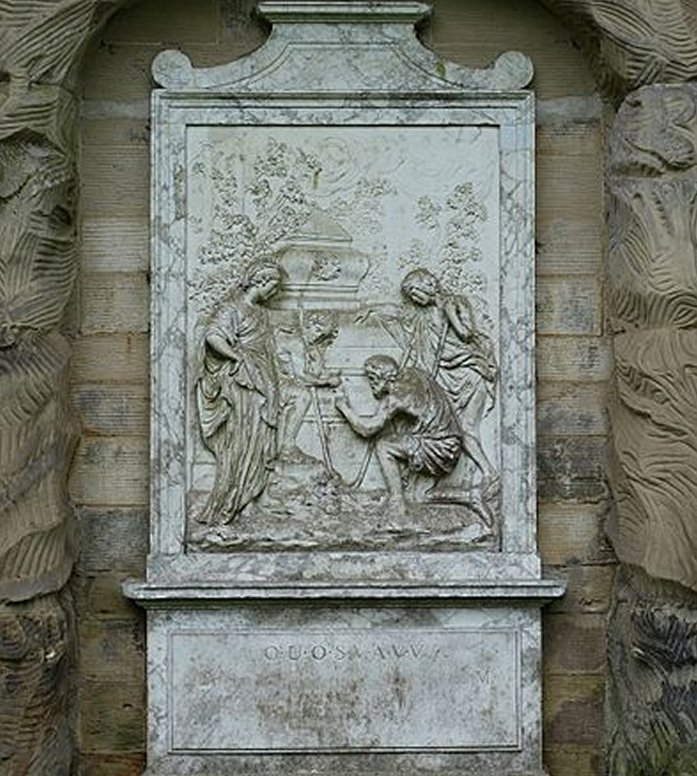Shepherd’s Monument Mystery: Yet Another Undeciphered Inscription
Ellen Lloyd - AncientPages.com - All across the world, there are still many mysterious ancient scripts, tablets, codes, and maps that, until this day, remain undeciphered.
Multiple attempts to solve the enigma have failed. Many of the world's greatest minds have tried to crack the code but without success, including Charles Dickens and Charles Darwin.
Shepherd's Monument, Shugborough Estate - Staffordshire, England. Image credit: Daderot - CC0 1.0
Margaret, Countess of Lichfield (1899–1988), claimed that the inscription was a love message, referring to Out Your Own Sweet Vale, Alicia, Vanishes Vanity. Twixt Deity and Man Thou, Shepherdess, The Way, but no source for these words have ever been traced.
In his book "Uncracked Codes and Ciphers" Vance Gortman mentions that:
"Steve Regimbal interprets the letters as standing for a new Latin translation of the phrase "Vanity of vanities, saith the preacher; all is vanity." (Ecclesiastes 12:8), namely Orator Ut Omnia Sunt Vanitas Ait Vanitas vanitatum. He has speculated that the phrase may be the source of the earlier inscription "OMNIA VANITAS," which may have been carved on an alcove at the estate of one of Thomas Anson's associates, George Lyttleton, " and "former NSA linguist Keith Massey interprets the letters as an initialism for the Latin phrase Oro Ut Omnes Sequantur Viam Ad Veram Vitam ("I pray that all may follow the Way to True Life") in reference to the Biblical verse John 14:6, Ego sum Via et Veritas et Vita ("I am the Way, the Truth, and the Life").
Many have tried to solve the puzzle of the 10-letter inscription - DOUOSVAVVM, but in vain.
For a long time, the Shepherd's Monument in Staffordshire, England, and its cryptic inscription was considered a great puzzle to all who tried to solve the enigma of the mysterious letter combination. The code inscribed on the Shepherd's Monument has eluded decipherment for over 250 years. Those of a romantic disposition believed it to be a coded message of the kind used by the Knights Templar and their successors to point to the whereabouts of the Holy Grail or some other religious relic. Others believed it to be a private affirmation of love.
The monument located at the grounds of Shugborough Hall in Staffordshire, England, was commissioned by Thomas Anson, paid for by his brother, Admiral George Anson, and fashioned by the Flemish sculptor Peter Scheemakers.
It is set within a stone arch resembling a cave entrance, carved to look natural and wild. It contains a marble bas-relief copy of Poussin's painting "The Shepherds of Arcadia" and an engraved inscription below it.
The relief shows a woman and three shepherds, two of whom are pointing to a tomb. On the tomb is carved the Latin text ET IN ARCADIA EGO ("I am also in Arcadia" or "I am, even in Arcadia").
The carving displays several minor alterations from the original painting.
The eight letters 'OUOSVAVV', framed by the letters 'DM'. Image credit: Naggie34 - Public Domain
Notably, the letters to which the shepherds are pointing have been changed, and an extra sarcophagus has been placed on top of the main tomb. Also, the relief sculpture is a mirror (or horizontally reversed) image of the painting. Above the Poussin scene are two stone heads, one likened to the goat-horned Greek god Pan.
Below it, an unknown craftsman carved the mysterious inscription, a sequence of ten letters that have never been satisfactorily explained and called one of the world's top uncracked cipher texts.
According to the Telegraph, "the Shugborough mystery arose in the years between 1748 and 1758 when the monument containing the code was installed." The estate was the home of the Anson family, whose most illustrious member was George Anson, one of Britain's greatest admirals.
In 1740, Anson led a fleet of seven ships on an epic circumnavigation, the highlight of which was the seizure of the Spanish bullion ship Nuestra Senora de Cavadonga." Anson's share of the booty ensured him a happy retirement and the expansion of Shugborough, the home of his brother Thomas. The National Trust now owns the estate but is still partially occupied by his descendant, the Earl of Lichfield.
The Anson brothers were considered members of secret societies, which abounded then.
One, the Priory of Sion, was regarded as a successor of the medieval Knights Templar, persecuted as heretics for their belief that Christ was not divine. Legend had it that they were the guardians of relics recovered from the Holy Land, including the Holy Grail, the cup used by Christ at the Last Supper.
The monument carried a relief based on a painting by Poussin, Et in Arcadia Ego. The artist was thought to be a member of the Templars. The memorial has the picture's title, and below are the ten letters with the D at the beginning and the M at the end, slightly lowered.
An American formerly involved with the military recently used the painting as a key to unlock the code.
Using a series of grids, he came up with the words Jesus H Defy, interpreting the H as chi, the Greek letter used to denote the Messiah.
Result: a Templar message defying the description of Jesus as the Son of God. The American, who refuses to be identified, believes other messages reside in the matrix. GCHQ endorsed his methodology but not necessarily his conclusions.
So, what is to be made of it all?
Richard Kemp, the general manager of the Shugborough Estate, said: "This confirms a link with the Templars. It's a very exciting discovery that confirms what was always rumored to be the case." And with that, he took off in search of the Grail.
Some might think the "discovery" is less than convincing. But Murlyn Hakon, of Bletchley Park, said: "There is something there."
However, there was another explanation.
Sheila Lawn, 81, a code-breaker at Bletchley during the war, favored a solution offered by another team. They say the eight central letters represent a Latin poem to a departed loved one: "Optima Uxoris Optima Sororis Viduus Amantissimus Vovit Virtutibus."
The lines are translated as: "Best Wife, Best Sister, Widower Most Loving Vows Virtuously." She said: "I believe in the simple approach, and this appears to be an elegant solution."
Still, there is a good reason to suppose that the Shepherds Monument was not there in 1748.
Philip Yorke, Lady Elizabeth Anson's brother and husband of Jemima, Marchioness Grey, visited in August 1763 and wrote to his father, Lord Hardwicke, describing, as he writes, the "many embellishments since I saw it (Shugborough) in 1748."
"I should not omit to mention the Bas Relief from Poussin's Arcadian Picture, the most elegant piece of modern sculpture I ever beheld & does great honor to Scheemaker's chisel."
Also, recent research has found that the first known mention of the monument is in a letter from Lady Elizabeth Anson, the wife of Admiral George Anson, to her brother-in-law Thomas in 1756. It means that the memorial must have been constructed on or before 1756.
It limits the possible date of the monument's construction from between 1749 to 1756. These years are critical as it is during these years that one very enigmatic figure entered the lives of the Anson family who could have been the reason for the monument's construction. This person is none other than the Count of St. Germain.
Written by - Ellen Lloyd – AncientPages.com
Copyright © AncientPages.com All rights reserved. This material may not be published, broadcast, rewritten or redistributed in whole or part without the express written permission of AncientPages.com
More From Ancient Pages
-
 World’s Oldest Tattoo Tools Discovered In Tennessee, North America
Archaeology | May 2, 2018
World’s Oldest Tattoo Tools Discovered In Tennessee, North America
Archaeology | May 2, 2018 -
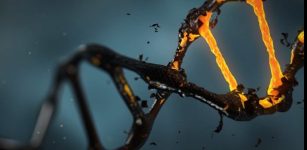 Genetic Links Between Traits Are Often Overstated – UCLA Study
Archaeology | Nov 28, 2022
Genetic Links Between Traits Are Often Overstated – UCLA Study
Archaeology | Nov 28, 2022 -
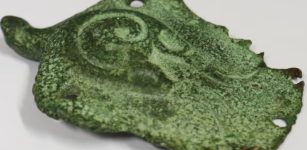 Rare 1,000 Year-Old Crusader-Era Bird Pendant Discovered
Archaeology | Mar 28, 2023
Rare 1,000 Year-Old Crusader-Era Bird Pendant Discovered
Archaeology | Mar 28, 2023 -
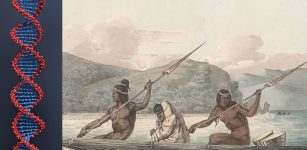 Surprising DNA Study Links Present-Day Native American Tribe To Ancestors In San Francisco Bay Area
Archaeology | Mar 22, 2022
Surprising DNA Study Links Present-Day Native American Tribe To Ancestors In San Francisco Bay Area
Archaeology | Mar 22, 2022 -
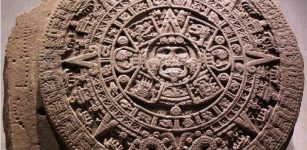 On This Day In History: Aztec Calendar Stone Rediscovered – On Dec 17, 1790
News | Dec 17, 2016
On This Day In History: Aztec Calendar Stone Rediscovered – On Dec 17, 1790
News | Dec 17, 2016 -
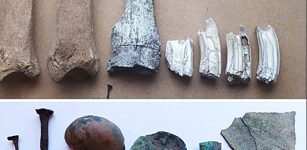 South American Cultures Quickly Adopted Horses – New Study
Archaeology | Dec 26, 2023
South American Cultures Quickly Adopted Horses – New Study
Archaeology | Dec 26, 2023 -
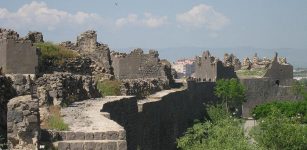 1,700-Year-Old Underground Temple Of Mithras Unearthed In East Anatolia, Turkey
Archaeology | May 10, 2017
1,700-Year-Old Underground Temple Of Mithras Unearthed In East Anatolia, Turkey
Archaeology | May 10, 2017 -
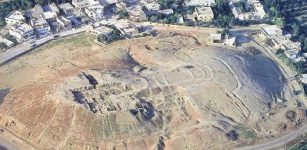 Iron Age Site Tell Deir ‘Alla (“Mound Of The High Monastery”) Flourished 400 Years In Central Jordan Valley
Archaeology | Jul 25, 2022
Iron Age Site Tell Deir ‘Alla (“Mound Of The High Monastery”) Flourished 400 Years In Central Jordan Valley
Archaeology | Jul 25, 2022 -
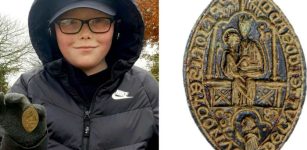 Rare Medieval Seal Matrix Found By 10-Year-Old Boy In UK
Artifacts | Apr 5, 2022
Rare Medieval Seal Matrix Found By 10-Year-Old Boy In UK
Artifacts | Apr 5, 2022 -
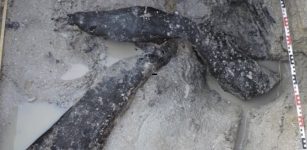 Discovery Of Half-Million-Year-Old Wooden Structure Shows We’re Wrong To Underestimate Our Ancient Relatives
Featured Stories | Oct 10, 2023
Discovery Of Half-Million-Year-Old Wooden Structure Shows We’re Wrong To Underestimate Our Ancient Relatives
Featured Stories | Oct 10, 2023 -
 Cerne Abbas Giant: Researchers Attempt To Determine Age Of Giant Figure
Archaeology | Mar 27, 2020
Cerne Abbas Giant: Researchers Attempt To Determine Age Of Giant Figure
Archaeology | Mar 27, 2020 -
 Cooking, Roasting And Eating Of Root Plants Is 120,000-Year-Old Habit
Archaeology | Jun 7, 2019
Cooking, Roasting And Eating Of Root Plants Is 120,000-Year-Old Habit
Archaeology | Jun 7, 2019 -
 Vikings’ Self-Image Was Influenced By Ancient Rome – Intriguing Grave And Artifacts Reveal
Archaeology | Oct 18, 2022
Vikings’ Self-Image Was Influenced By Ancient Rome – Intriguing Grave And Artifacts Reveal
Archaeology | Oct 18, 2022 -
 Warming Of North Pacific Helped First Human Migration From Asia To North America
Archaeology | Dec 15, 2020
Warming Of North Pacific Helped First Human Migration From Asia To North America
Archaeology | Dec 15, 2020 -
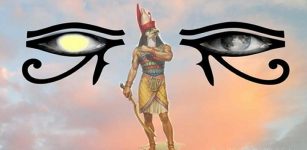 Horus – One Of The Most Important Ancient Egyptian Gods And Symbol Of Rulership and Justice
Egyptian Mythology | Jun 26, 2018
Horus – One Of The Most Important Ancient Egyptian Gods And Symbol Of Rulership and Justice
Egyptian Mythology | Jun 26, 2018 -
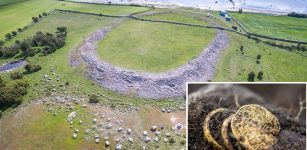 Gold Coins Shed Light On The Mystery Of Sandby Borg And Massacre On The Swedish Island
Archaeology | Oct 16, 2017
Gold Coins Shed Light On The Mystery Of Sandby Borg And Massacre On The Swedish Island
Archaeology | Oct 16, 2017 -
 Cremation In The Near East Dates Back To 7,000 B.C.
Archaeology | Aug 13, 2020
Cremation In The Near East Dates Back To 7,000 B.C.
Archaeology | Aug 13, 2020 -
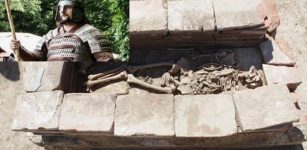 Rare Discovery: Remains Of An Avar Warrior And A Belt Unearthed In Vinkovci, Croatia
Archaeology | May 3, 2020
Rare Discovery: Remains Of An Avar Warrior And A Belt Unearthed In Vinkovci, Croatia
Archaeology | May 3, 2020 -
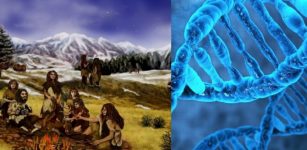 Neanderthals Had Older Mothers And Younger Fathers Compared To Modern Humans
Archaeology | Apr 23, 2020
Neanderthals Had Older Mothers And Younger Fathers Compared To Modern Humans
Archaeology | Apr 23, 2020 -
 Spectacular Ancient Underground ‘Stonehenge’ Dolmen De Soto Reveals Its Secrets
Archaeology | Apr 18, 2019
Spectacular Ancient Underground ‘Stonehenge’ Dolmen De Soto Reveals Its Secrets
Archaeology | Apr 18, 2019

